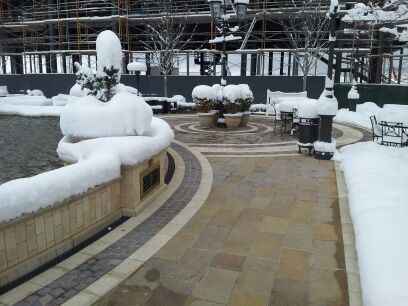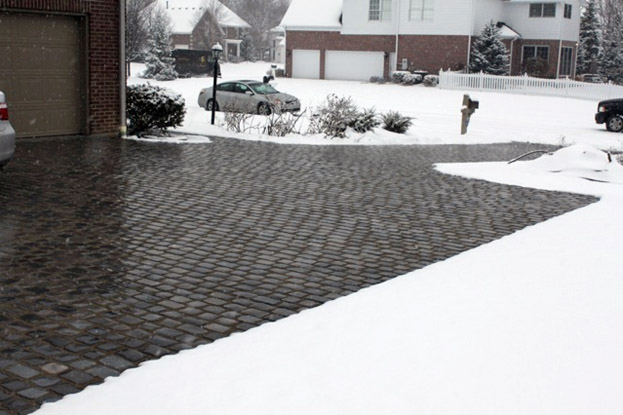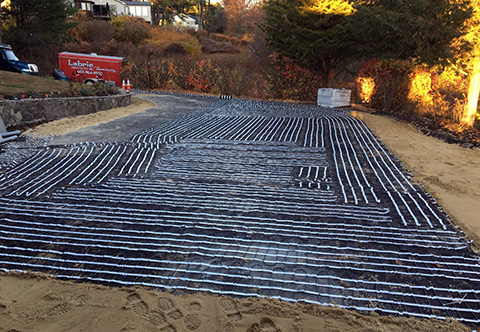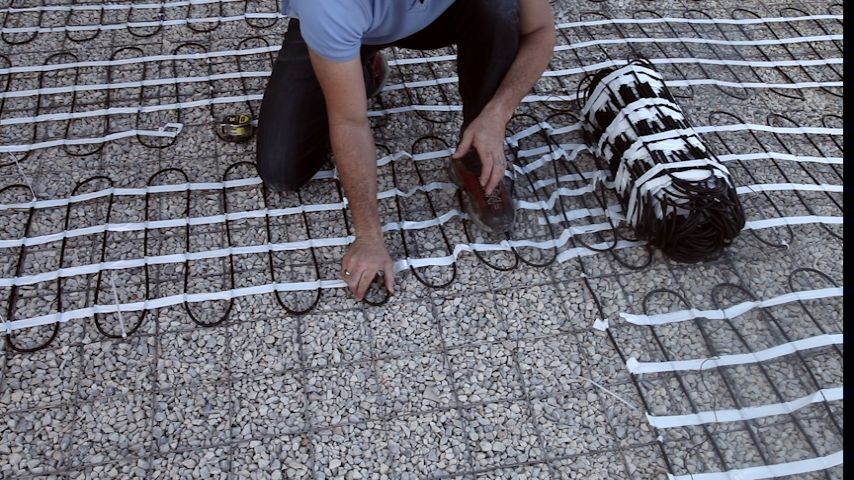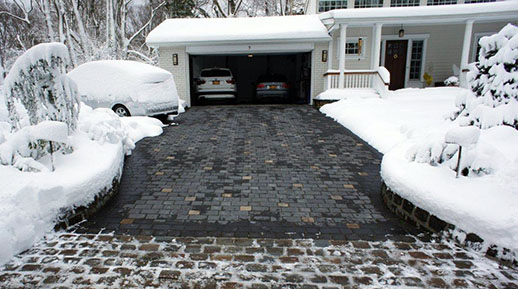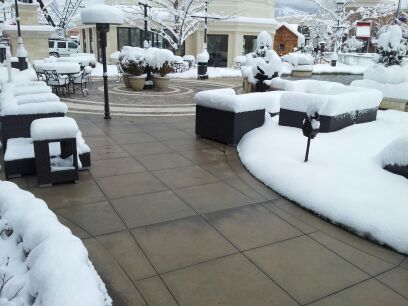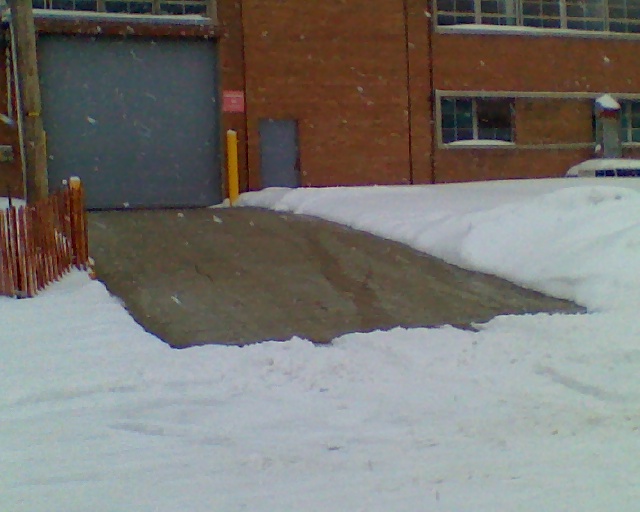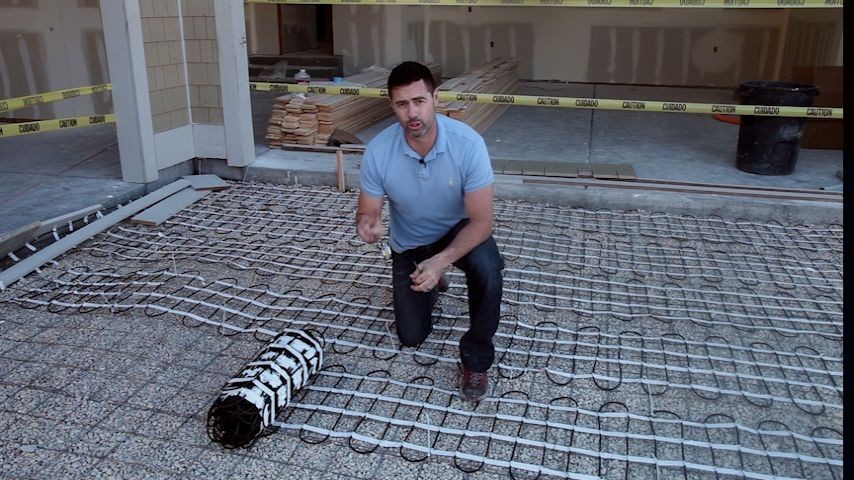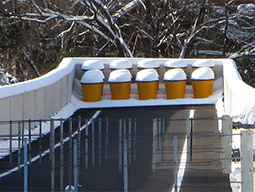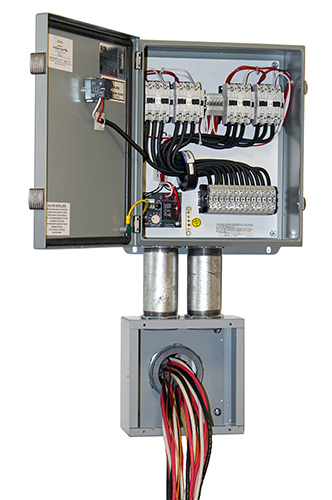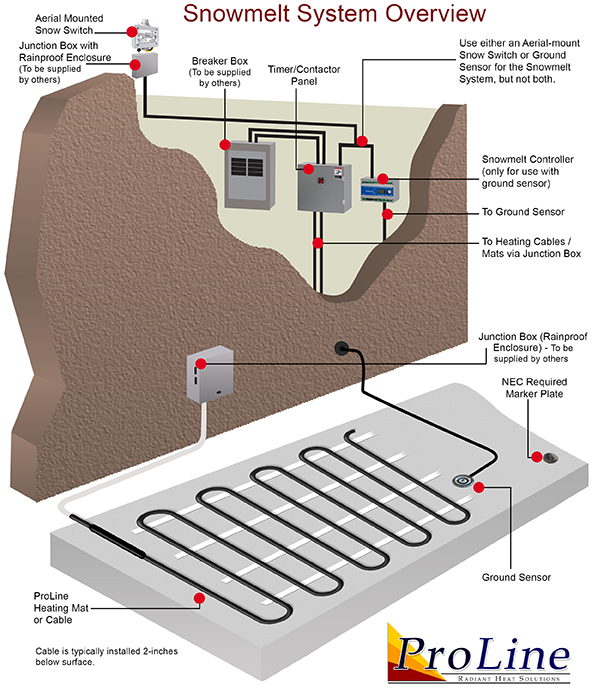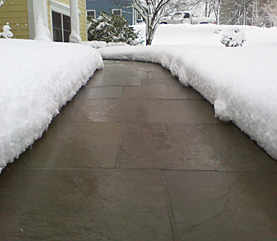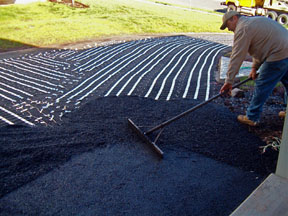Even though spring is just waking up, now is a great time to purchase and install a radiant heat system. Early bird discounts may apply to roof deicing systems as well as ProLine heated driveways and snow melting systems.
Installing a heated driveway or snow melting system in early spring puts you at a distinct advantage versus installing it later in the year. As you know, during the summer “construction season”, most contractors are frantically trying to complete as many of their projects as possible before the winter weather hits. Consequently, when fall comes, builders compete to purchase the necessary products to complete their projects. Oftentimes, materials are short, and the pressure to finish the open jobs can be stressful, to say the least. And sometimes it’s difficult for general contractors to find qualified radiant heat installers at the last minute. As successful contractors know, doing the job right, the first time is crucial to those serious about staying in business.
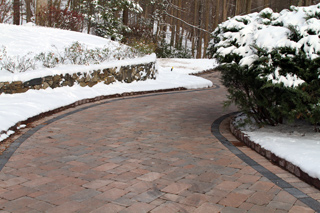
When it comes to finding experienced installers for your radiant heat project, ProLine Radiant keeps track of those installers who have installed radiant heat systems and received favorable reviews from customers. And keep in mind, radiant heat applications are extremely flexible and adaptable, offering homeowners many options to achieve their goals, so don’t be discouraged by small budgets. Radiant heat systems can be easily customized to meet customers’ snow melting needs as well as their budgets.
Whether you’re pouring new concrete or repairing existing pavement, radiant heat installation is an excellent investment for homeowners that not only preserves and protects their residences, but also helps to prevent litigation from slip and fall accidents at business locations. For safety reasons alone, installing radiant heat makes sense. Snow melting systems can save time and eliminate the added expense of hiring a snow removal professional to plow driveways and parking areas. With radiant heated driveways and walkways, you get fully automated snow removal to ensure safe driveways and walks all year round. And the maintenance-free systems operate silently on renewable energy.
In addition to providing industry leading snow melting, roof deicing and floor heating solutions, ProLine’s customer services are unmatched. Each radiant heat solution purchased from ProLine comes with a professional consultation, including an AutoCAD system design, so you’ll know the proper layout and materials, proper load calculations, breaker sizes, number of breakers, and performance expectations for your project prior to installation. Technical support is also extended to your installers.
Additionally, free installation training courses are also provided by ProLine Radiant. These services are second to none in the industry, and are included for each ProLine Radiant customer. For more information about radiant heat systems, contact a friendly expert today at 866.676.9276.

